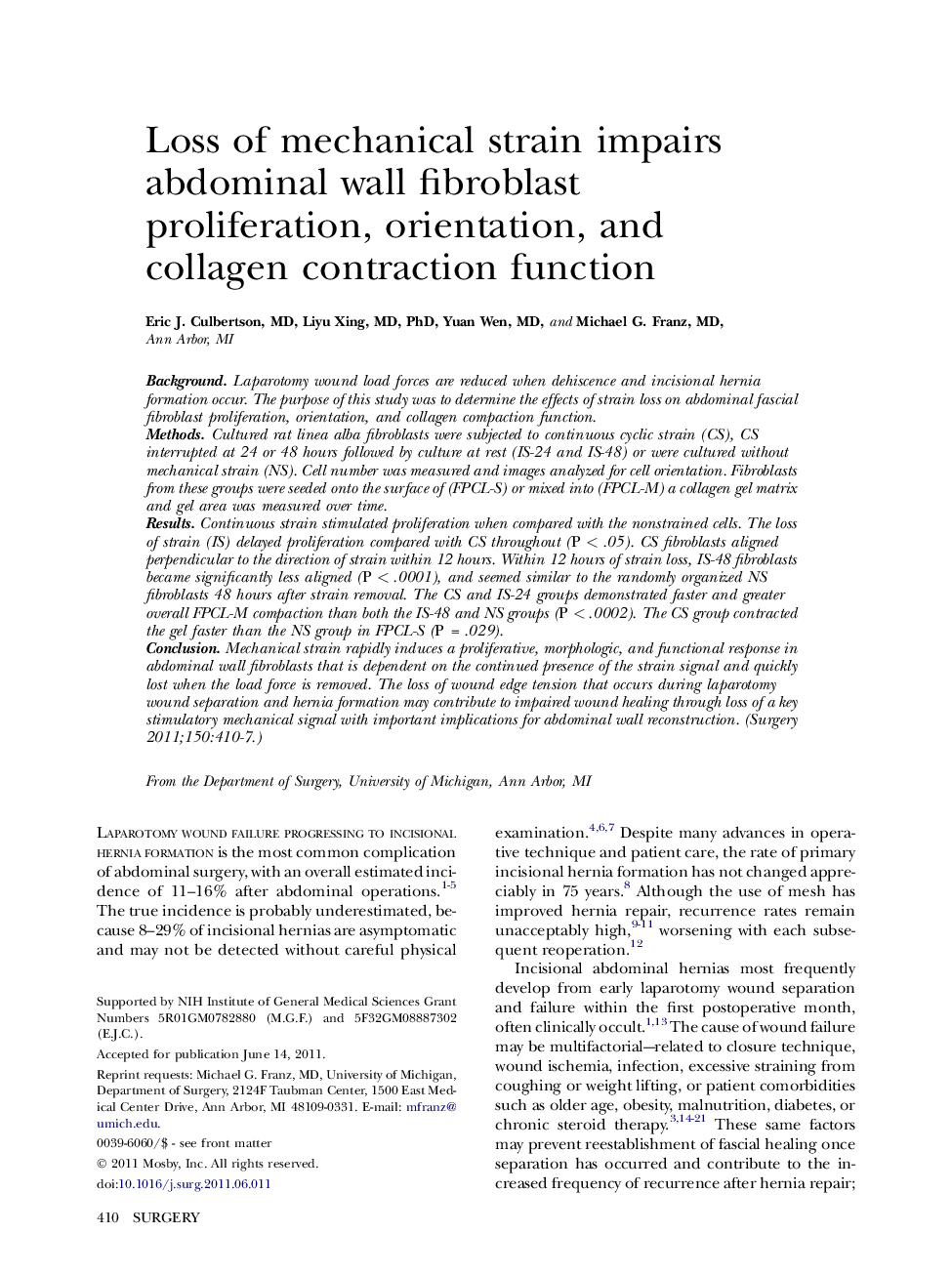| Article ID | Journal | Published Year | Pages | File Type |
|---|---|---|---|---|
| 4308484 | Surgery | 2011 | 8 Pages |
BackgroundLaparotomy wound load forces are reduced when dehiscence and incisional hernia formation occur. The purpose of this study was to determine the effects of strain loss on abdominal fascial fibroblast proliferation, orientation, and collagen compaction function.MethodsCultured rat linea alba fibroblasts were subjected to continuous cyclic strain (CS), CS interrupted at 24 or 48 hours followed by culture at rest (IS-24 and IS-48) or were cultured without mechanical strain (NS). Cell number was measured and images analyzed for cell orientation. Fibroblasts from these groups were seeded onto the surface of (FPCL-S) or mixed into (FPCL-M) a collagen gel matrix and gel area was measured over time.ResultsContinuous strain stimulated proliferation when compared with the nonstrained cells. The loss of strain (IS) delayed proliferation compared with CS throughout (P < .05). CS fibroblasts aligned perpendicular to the direction of strain within 12 hours. Within 12 hours of strain loss, IS-48 fibroblasts became significantly less aligned (P < .0001), and seemed similar to the randomly organized NS fibroblasts 48 hours after strain removal. The CS and IS-24 groups demonstrated faster and greater overall FPCL-M compaction than both the IS-48 and NS groups (P < .0002). The CS group contracted the gel faster than the NS group in FPCL-S (P = .029).ConclusionMechanical strain rapidly induces a proliferative, morphologic, and functional response in abdominal wall fibroblasts that is dependent on the continued presence of the strain signal and quickly lost when the load force is removed. The loss of wound edge tension that occurs during laparotomy wound separation and hernia formation may contribute to impaired wound healing through loss of a key stimulatory mechanical signal with important implications for abdominal wall reconstruction.
